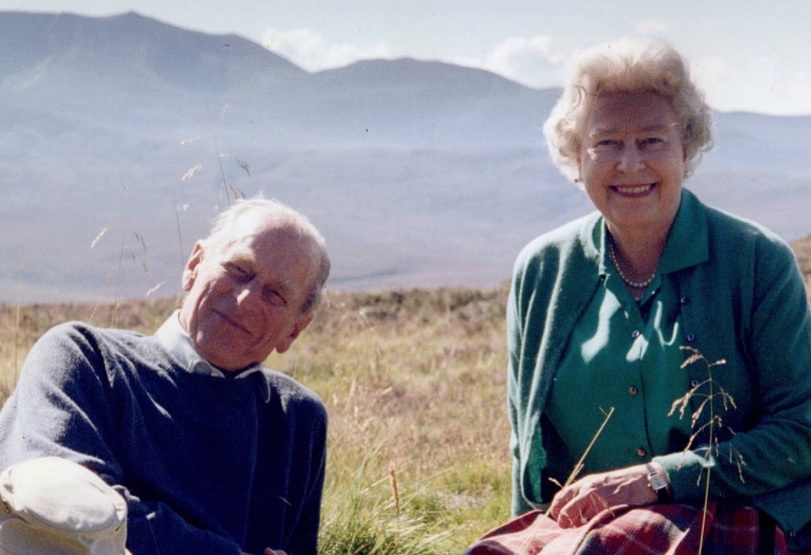
The Queen is marking what many are calling her ‘loneliest day’ – 74 years after she married the Duke of Edinburgh.
On November 20 1947, 21-year-old Princess Elizabeth married Lieutenant Philip Mountbatten at Westminster Abbey in London.
The marriage would last until Prince Philip’s death in 2021 at the age of 99, making their enduring relationship the longest lasting the longest of any British sovereign in history.
Whereas today was due to be a day of celebrations, Her Majesty is spending the day in quiet contemplation at Windsor Castle just 225 days after the death of her husband.
Elizabeth and Philip first met in 1939 when she was thirteen-years-old. Their connection was strong from the start and so it wasn’t long before whispers of a possible royal match were spreading.
Though it was undoubtedly going to be a love match it was also highly suitable as Philip, the great-great-great grandson of Queen Victoria and the nephew of Lord Mountbatten, was an obvious choice of suitor for the young princess. It was of little surprise then when he began the process to become a naturalised British citizen in the autumn of 1944.
By the time his naturalisation was complete in February 1947 Philip had already proposed to and been accepted by the young princess, though the formal announcement was to wait until after Elizabeth’s twenty-first birthday at her father’s request.
On 10 July 1947 Buckingham Palace announced the betrothal of The Princess Elizabeth and Lieutenant Philip Mountbatten in a formal statement:
‘It is with the greatest pleasure that the King and Queen announce the betrothal of their dearly beloved daughter The Princess Elizabeth to Lieutenant Philip Mountbatten, RN, son of the late Prince Andrew of Greece and Princess Andrew (Princess Alice of Battenberg), to which union the King has gladly given his consent.’
The happy news was immediately welcomed by the nation and the reaction was nicely summarised by Winston Churchill who called the union ‘a flash of colour on the hard road we have to travel’.
There was, of course, concerns about the costs of the wedding given the fragile economy and the fact that rationing was still in full force in post-war England but in the choice between austerity and pageantry it was decided that most people would prefer the latter. Ultimately, The King announced his intention to pay all wedding expenses from the Privy Purse.
In the lead up to the wedding on 20 November Princes Elizabeth was granted the Order of the Garter on 11 November and Prince Philip received it on 19 November (making Elizabeth the senior member). King George also arranged to create Philip (who had renounced his German and Danish titles) a Royal Highness and to grant him the titles of Baron Greenwich, Earl or Merioneth and Duke of Edinburgh.
The Princess Elizabeth and Prince Philip received more than three thousand presents from royal relations and the general public which were put on display for the masses at St James’s Palace. This marked a change in royal rule as previously royal couples had only been allowed to receive gifts from people they knew personally.
On the morning of the royal wedding Prince Philip ordered tea and coffee to be delivered to the photographers waiting outside Kensington Palace (much the same as his grandson, Prince William, would do ahead of his own wedding in 2011).
Princess Elizabeth and her eight bridesmaids got ready at Buckingham Palace and though there were a number of mishaps on the morning of the wedding – including a broken tiara, a missing bouquet and the necessary commandeering of pearls which had unwittingly been put on public display – the bride was only 60 seconds late arriving at Westminster Abbey alongside her father, who was in the uniform of an Admiral of the Fleet.
Designed by Norman Hartnell, Elizabeth’s iconic wedding dress took seven weeks to make at a cost of three thousand coupons. Like the Duchess of Cambridge in England’s most recent royal wedding, the bride did her own makeup for the ceremony.
Cyril Garbett, the Archbishop of York, officiated the wedding ceremony alongside the Archbishop of Canterbury and said the wedding was ‘in all essentials exactly the same as it would have been for any cottager who might be married this afternoon in some small country church in a remote village in the Dales.’
After signing the register to officially record the marriage of ‘Philip Mountbatten, Bachelor’ and ‘Elizabeth Alexandra Mary Windsor, Spinster’ the couple left Westminster Abbey to the soundtrack of Mendelssohn’s ‘Wedding March’ which had become a popular matrimonial choice following its original use by Queen Victoria’s daughter, the Princess Royal in 1858.
Following a wedding breakfast for 150 guests at Buckingham Palace the happy couple departed in an open landau for Waterloo Station where they left for their honeymoon, first at Broadlands, the Mountbatten’s’ home in Hampshire and then Birkhall, on the borders of the Balmoral estate.
Following the successful day King George wrote to Elizabeth: ‘I was so proud of you & thrilled at having you so close to me on our long walk in Westminster Abbey, but when I handed your hand to the Archbishop I felt I had lost something very precious. You were so calm and composed during the Service & said your words with such conviction, that I knew everything was all right.’

